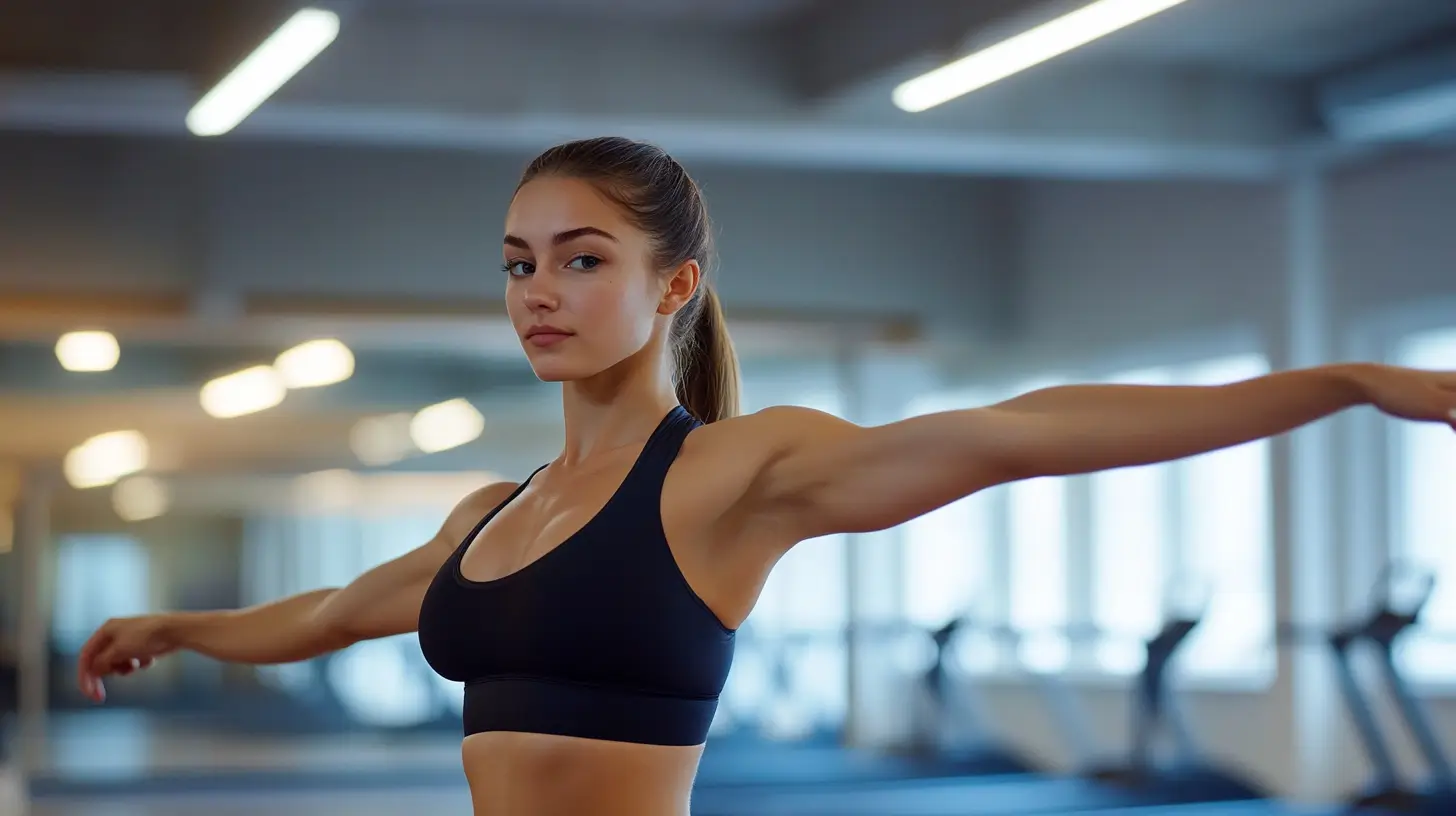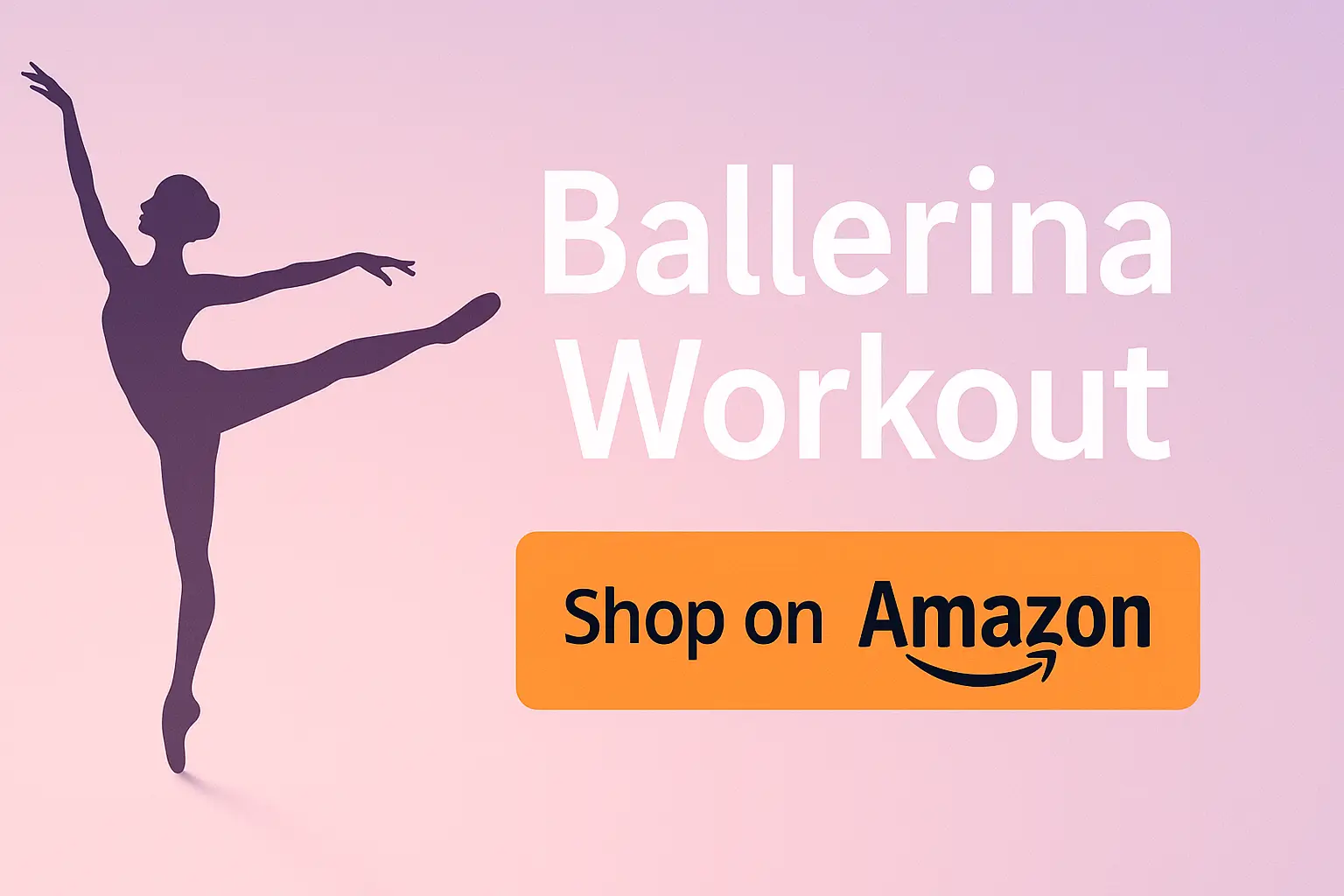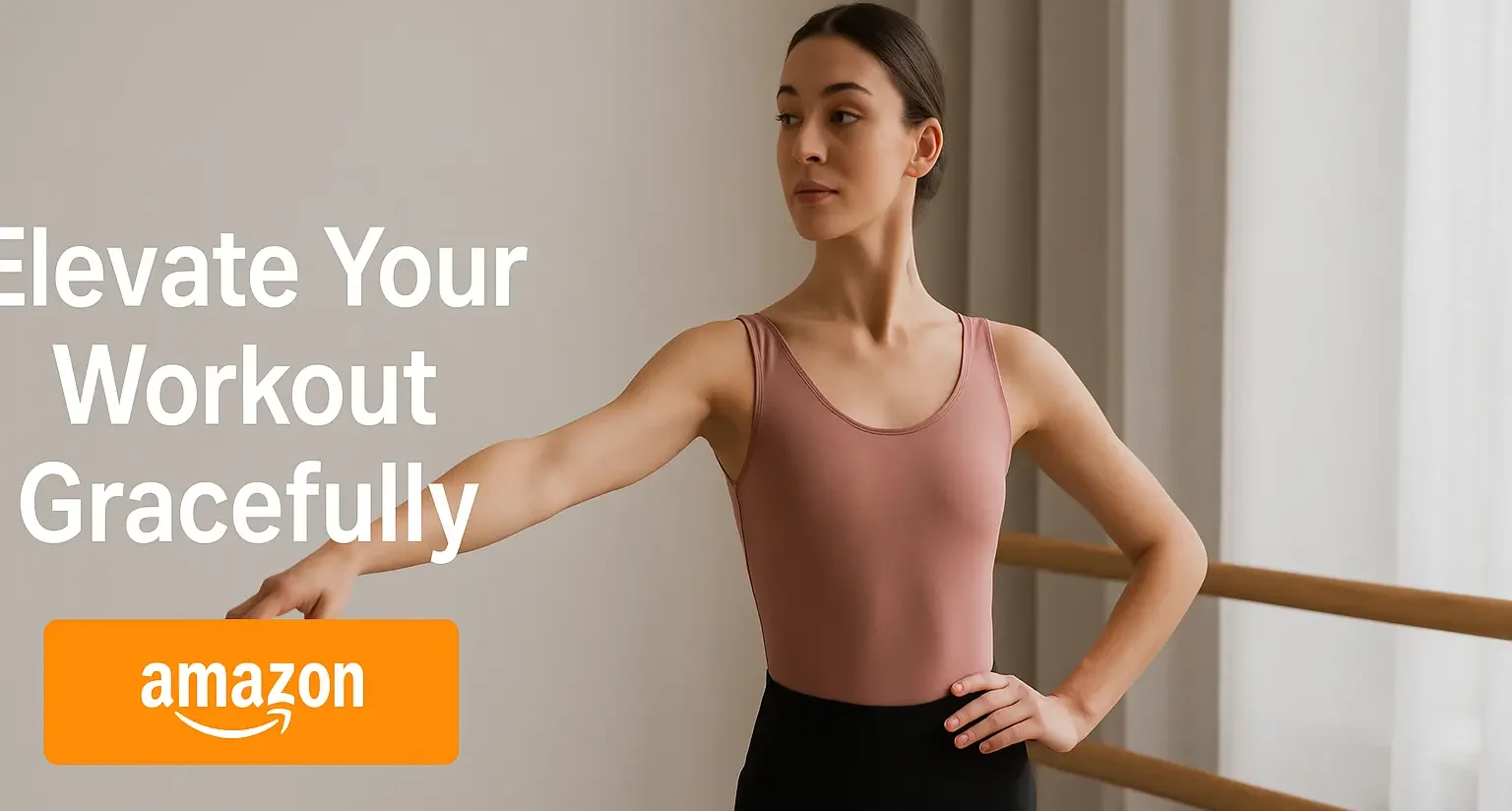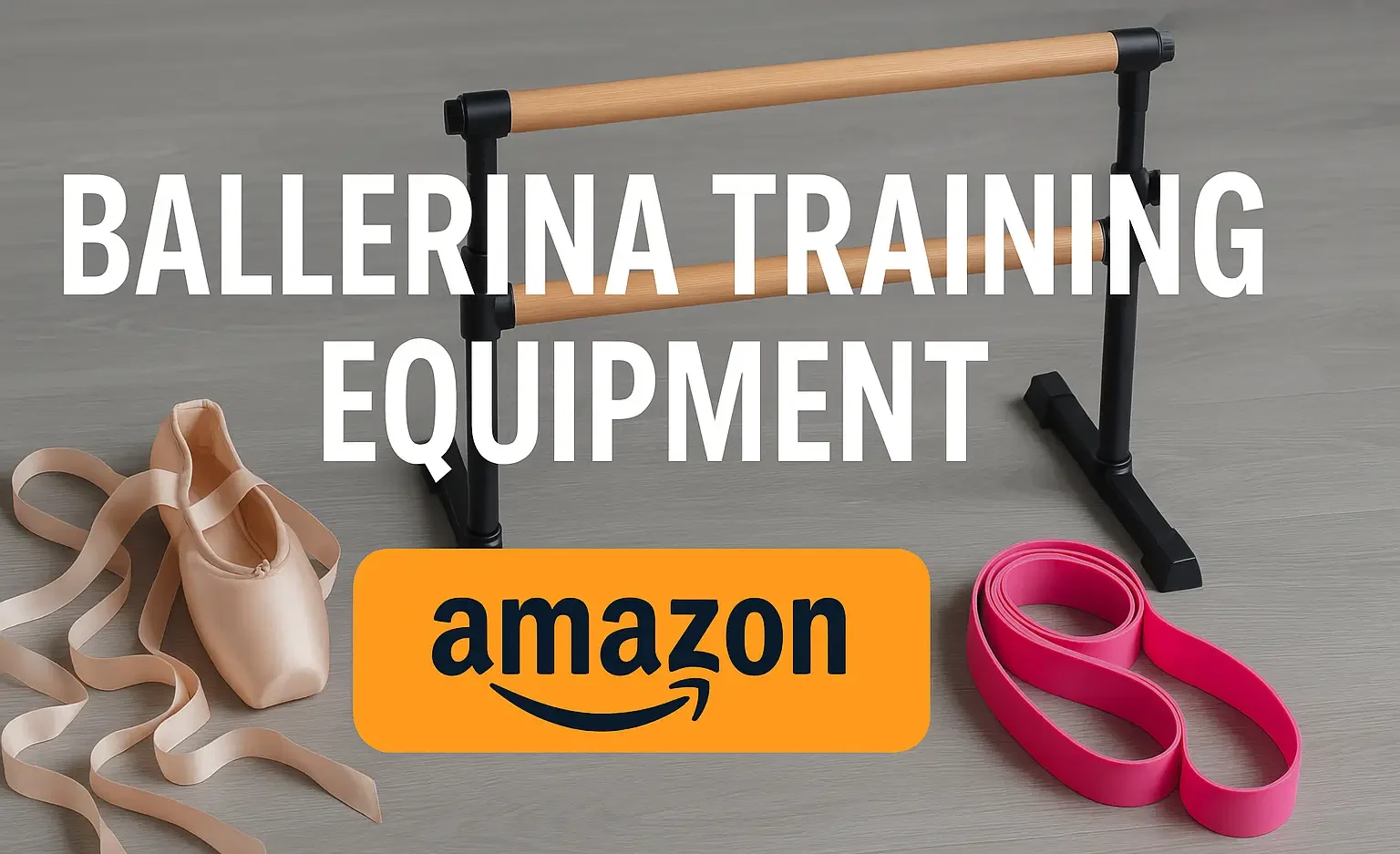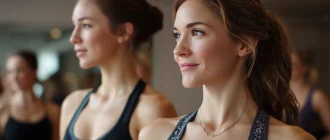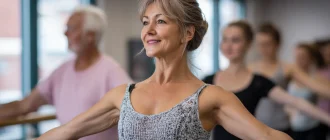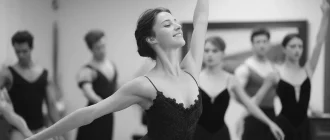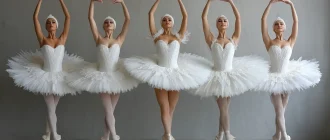Want to train like a professional ballerina while hitting the gym? Inspired by the rigorous, professional ballerina training and intense physical demands of the English National Ballet, this ballerina gym workout combines strength, flexibility, and grace to help you build a strong, lean body. Expect exercises that enhance your balance, coordination, and overall physical performance.
Graceful Insights
- A comprehensive warm-up, including dynamic stretches and foam rolling, prevents injuries and enhances performance.
- Lower-body strength training, core stability exercises, and upper-body conditioning are essential for achieving the strength, grace, and balance needed in ballet.
- Incorporating flexibility, balance training, gym workouts that combine strength training and cardio, and proper cool-down routines will significantly improve your overall ballet performance and recovery.
Art de Podcast
| Exercise | Muscle Groups Targeted | Description | Reps/Sets | Benefits for Dancers |
|---|---|---|---|---|
| Plie Squats | Quads, Glutes, Inner Thighs | Stand with feet in a wide stance and toes turned out. Lower into a squat, keeping your back straight and knees tracking over your toes. | Three sets of 12-15 reps | It builds leg strength, improves turnout, and enhances lower body power and stability for jumps and relevés. |
| Deadlifts | Hamstrings, Glutes, Lower Back | With a barbell or dumbbell, hinge at your hips, keep your back straight, and lower the weights while slightly bending your knees. | Three sets of 10 reps | Strengthens the hamstrings and glutes for smoother transitions in jumps, arabesques, and balances. |
| Calf Raises | Calves, Ankles, Feet | Stand with your feet hip-width apart. Raise your heels off the ground and balance on the balls of your feet. Slowly lower back down. | Three sets of 20 reps | It enhances foot strength and ankle stability, which is crucial for pointe work, turns, and relevés. |
| Single-Leg Romanian Deadlifts | Hamstrings, Glutes, Core, Balance | You are holding a dumbbell in one hand, hinging at your hips while raising the opposite leg behind you. Maintain balance and return to the start. | Three sets of 10 reps (each leg) | Improves balance, core stability, and strength for arabesque positions and controlled landings. |
| Russian Twists | Obliques, Core | Sit on the floor, lean back slightly, and twist your torso from side to side while holding a weight or medicine ball. | Three sets of 20 twists | Enhances core rotational strength and stability for turns, pirouettes, and posture. |
| Back Extensions | Lower Back, Core | Use a hyperextension bench or stability ball to extend your back. This will lift your upper body while keeping your legs stable. | Three sets of 12 reps | It strengthens the lower back and spine, improving posture and back flexibility, which is essential for arabesques and cambrés. |
| Pull-Ups | Upper Back, Shoulders, Arms | Pull yourself up from the bar until your chin is above it, then lower yourself back down with control. | Three sets of 6-8 reps | Builds upper body strength, helping to maintain posture and control during lifts and port de bras. |
| Side Leg Lifts | Outer Thighs, Hips, Core | Lie on your side, lift your top leg to hip height, then lower it back with control. | Three sets of 15 reps per side | It strengthens hip muscles and is crucial for développés, high extensions, and leg control in various ballet movements. |
| Plank with Leg Lift | Core, Glutes, Hamstrings, Shoulders | Get into a plank position and alternate lifting each leg off the ground, keeping the core engaged and back straight. | Three sets of 30 seconds | It enhances core and lower body strength while improving overall stability, which is vital for maintaining balance during complex ballet sequences. |
| Cable Machine Leg Extensions | Quads, Glutes, Core | Attach a cable to your ankle and extend your leg forward or backward while maintaining a strong, balanced posture. | Three sets of 12 reps per leg | It enhances leg strength and control, helping with powerful extensions and higher leg lifts in adagio. |
Warm-Up Routine
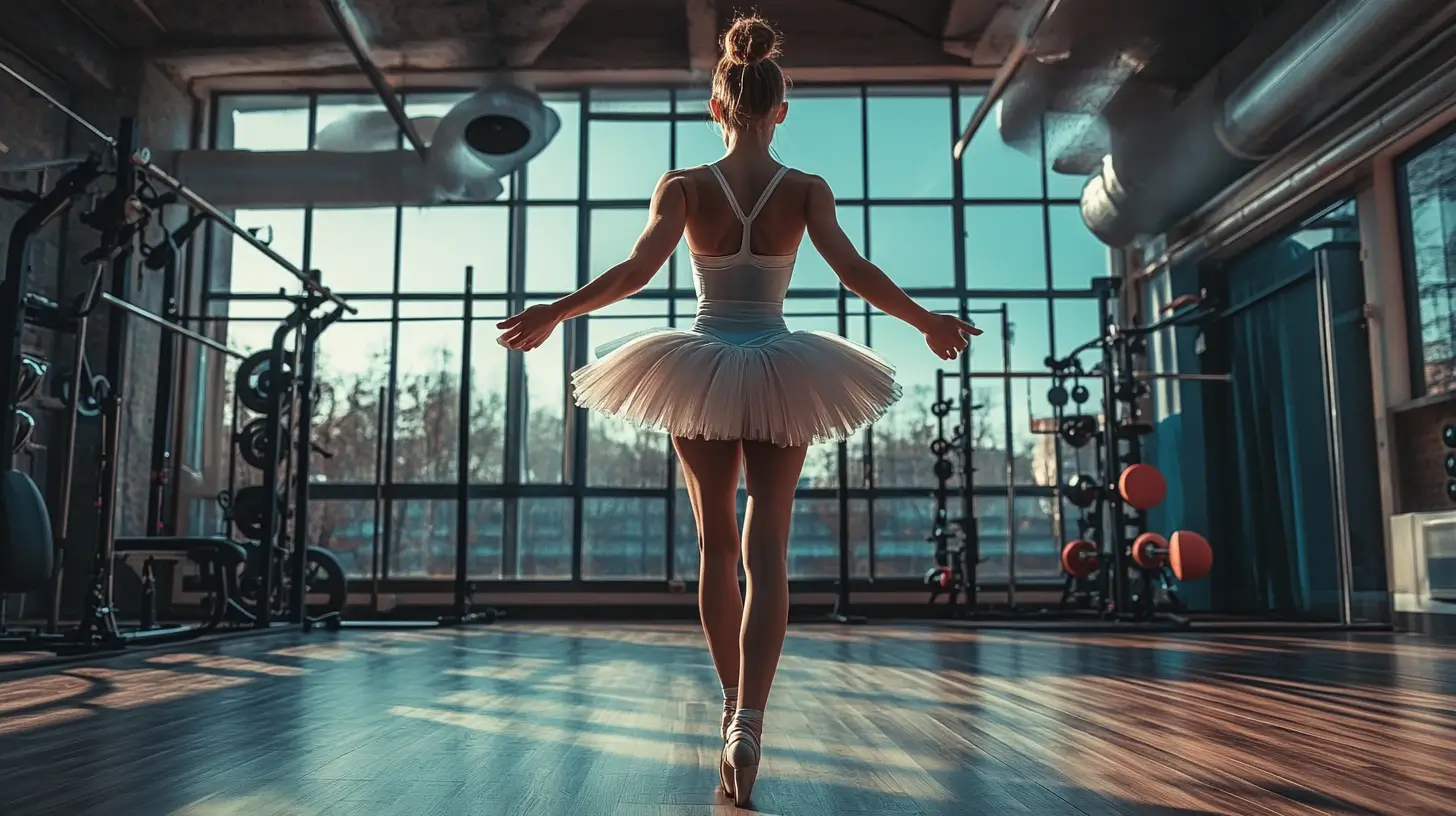
Every effective workout begins with a proper warm-up, crucial for preventing injuries and enhancing performance. Our warm-up routine includes dynamic stretches and foam rolling, both of which are essential for preparing your body for intense exercise.
Dynamic stretches, such as leg swings and arm circles, increase blood flow and flexibility. Foam rolling helps release muscle tension and improve mobility. Together, these components ensure that your muscles are ready to perform at their best, setting the stage for a successful workout.
Dynamic Stretches
Dynamic stretches are a staple in any dancer’s warm-up routine. These movements mimic dance techniques, helping to enhance flexibility and prepare the muscles for performance. Examples include leg swings, which loosen up the hips, arm circles that prepare the elbows and shoulders, and torso twists to engage the core.
Incorporating these stretches into your warm-up can improve your range of motion and reduce the risk of injuries during your workout.
Foam Rolling
Foam rolling is an effective technique for alleviating muscle tension and enhancing mobility. By targeting major muscle groups and trigger points, foam rolling helps release knots caused by repetitive movements, such as those in dance. This practice prepares your muscles for the workout ahead, maximizes flexibility, and reduces post-exercise soreness.
You’re incorporating foam rolling into your routine to warm up your muscles before the workout.
Lower Body Strengthening Exercises
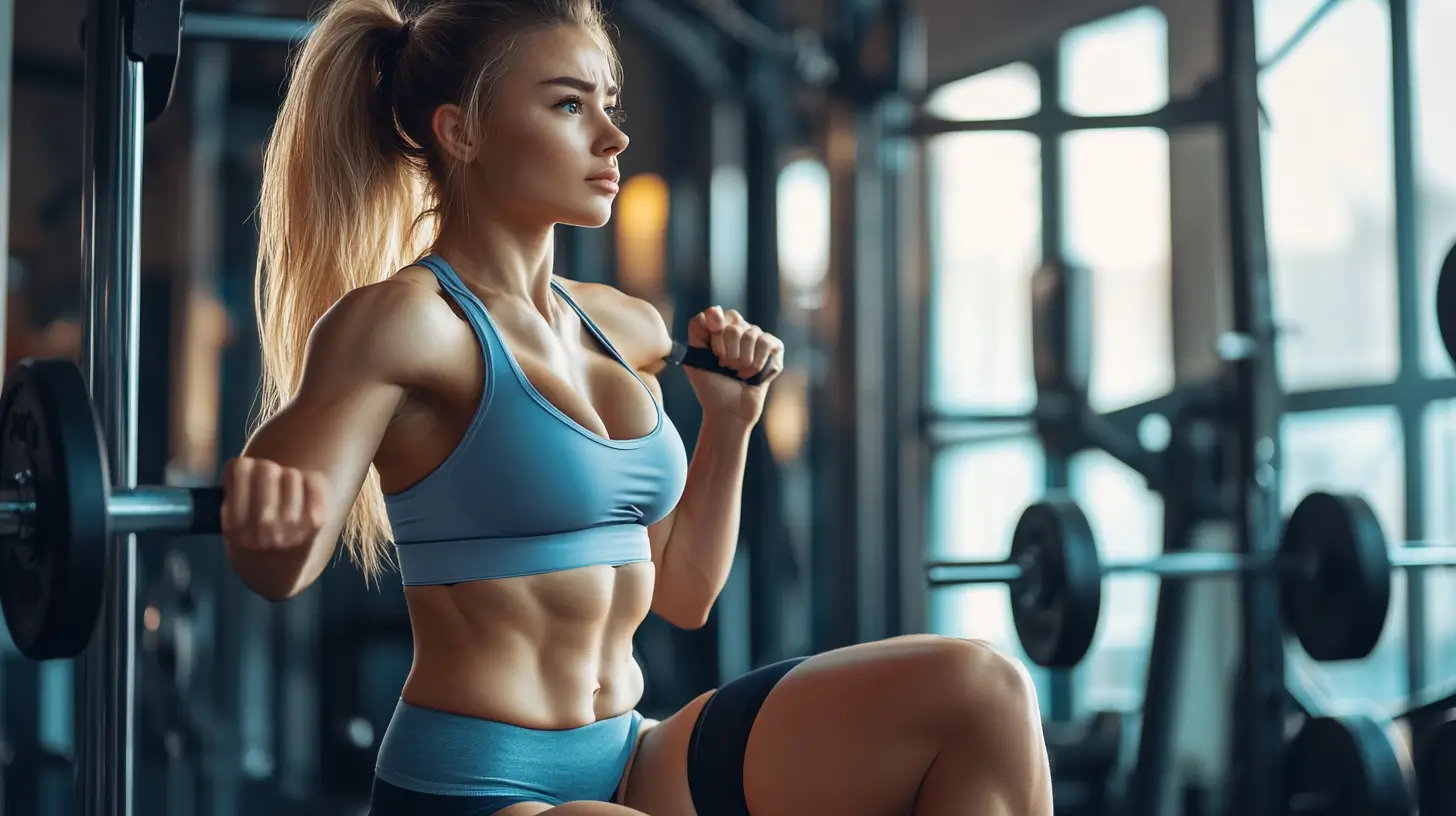
A strong lower body is essential for professional ballet dancers, providing the foundation for jumps, turns, and other complex movements. Our lower body workout includes the barbell back squat, single-leg press, and weighted calf raises. These exercises target the quads, glutes, and calves, ensuring your legs are powerful and stable.
These workouts help you build the strength needed to perform ballet movements with precision and grace, similar to the skills of professional ballet dancers, former professional ballet dancers, and ballerinas.
Barbell Back Squat
The barbell back squat is a cornerstone of strength training, particularly for dancers. This exercise focuses on the quadriceps and glute muscles, helping to build powerful legs that support movement.
To perform this, place the heavyweights on the other side of the barbell across your shoulders, squat down until your thighs and feet are parallel to the ground, and then rise back up. Performing five sets of 5 reps in the second and first positions will ensure you build the necessary strength and endurance.
Single-Leg Press on Leg Press Machine
The single-leg press is crucial for developing leg strength and stability and is particularly beneficial for dancers. Using heavy weights on the side of each leg, press the machine with one leg while keeping the other leg stationary.
To prevent injury, perform five sets of five reps on each side, avoiding locking the knee. This exercise strengthens the arms and legs, enhancing balance and control.
Weighted Calf Raises
Calf raises are essential for dancers because they develop the calf muscles that support jumps and landings. Weighted calf raises can be performed with dumbbells, kettlebells, or barbells.
Perform three sets of 15 reps, ensuring you maintain proper form by positioning your feet and legs in the second position from the first or second position and holding your weight onto a barre or wall for stability. This exercise will help you achieve the powerful, toned calves necessary for ballet.
Core Stability and Strength
Bal ballet dancers need core exercises to maintain balance and execute complex movements. Our core workout includes plank variations, leg lifts, and bridging exercises. These exercises engage upper and lower abdominal muscles, providing a strong foundation for your entire body.
Strengthening your core will improve your posture and enhance your overall dance performance.
Plank Variations
Plank variations are excellent for building core strength and stability. Exercises like the plank position with hip dips and the side-to-side plank position pulse specifically target the midsection, helping to achieve a lean appearance. Incorporating these variations into your routine can improve strength and ballet performance, including the plank position.
Engage in these exercises to enhance your core engagement and overall body strength.
Leg Lifts
Leg lifts are crucial for activating the core and engaging the hips and inner thighs. To perform leg lifts, lie on the floor with your legs straight and lift them to a 90-degree angle, keeping your body weight off the ground. Ensure your lower back remains on the floor to maintain proper spinal alignment.
This exercise helps strengthen the hip flexors and improves lower body control, making it an essential part of your core workout.
Bridging
Bridging exercises strengthen the glutes and hamstrings and are crucial for stabilizing the pelvis. To perform a bridge, lie on your back with your arms, elbows, and knees bent and your feet flat on the ground. Lift your arms, legs, and hips towards the ceiling, squeezing your glutes at the top.
This exercise promotes a lifted and toned appearance, which benefits dancers. Incorporate bridging into your routine to strengthen your posterior chain.
Upper Body Conditioning
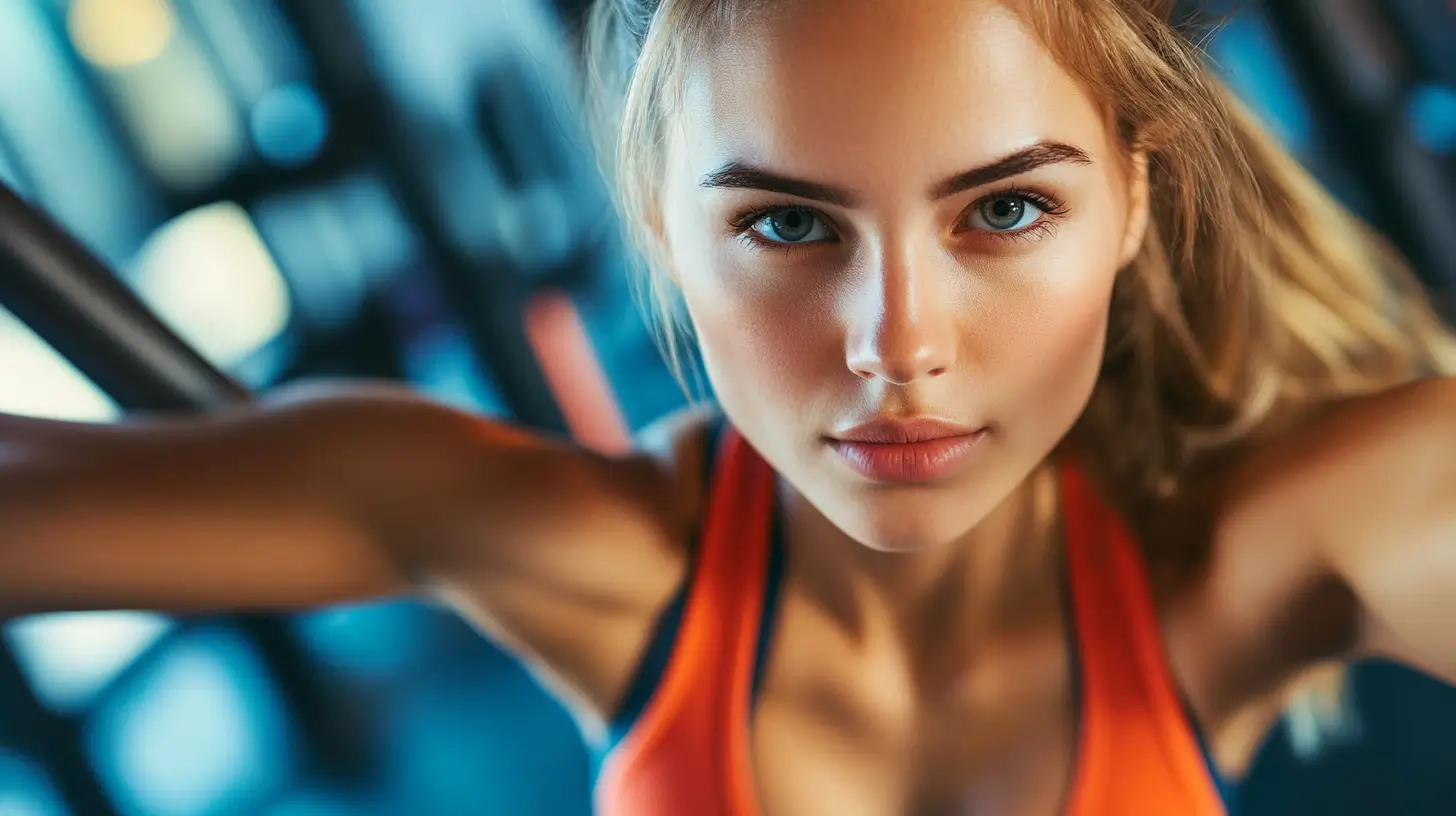
Upper body conditioning is crucial for improving posture and enhancing the aesthetic appeal of ballet movements. Our upper body workout includes pull-ups, single-arm overhead kettlebell exercises, shoulder press-ups, and ballet arm movements. These exercises target the shoulders, arms, and back, ensuring balanced muscle development.
By incorporating these workouts into your routine, you’ll achieve the strength and elegance needed for ballet.
Pull-Ups
Pull-ups are a powerful exercise for building upper-body strength. Alternate between wide-grip and close-grip pull-ups to target various muscle groups. Perform five sets of 8 reps to ensure balanced conditioning.
This routine will help you develop the strength and endurance needed to support ballet movements and maintain a strong upper body.
Single-Arm Overhead Kettlebell Press
The single-arm overhead kettlebell forearm press is crucial for developing strength in your shoulders and arms. Start in a rack position, press both arms, and lift the kettlebell by the forearms overhead, performing five sets of 8 reps per side. This exercise promotes balance and forearm stability, which are essential for shoulder press movements in ballet.
This press enhances your upper body strength when included in your routine.
Ballet Arms
Ballet arms are crucial for creating an elegant appearance and showcasing graceful movements in ballet. Exercises targeting the shoulder and back muscles, such as arm circles and resistance band pulls, help develop the strength and control needed for ballet.
These exercises help you achieve the’ refined movement and poised look ‘ of professional dancers by incorporating techniques similar to those used by experienced professionals.
Flexibility and Balance Training
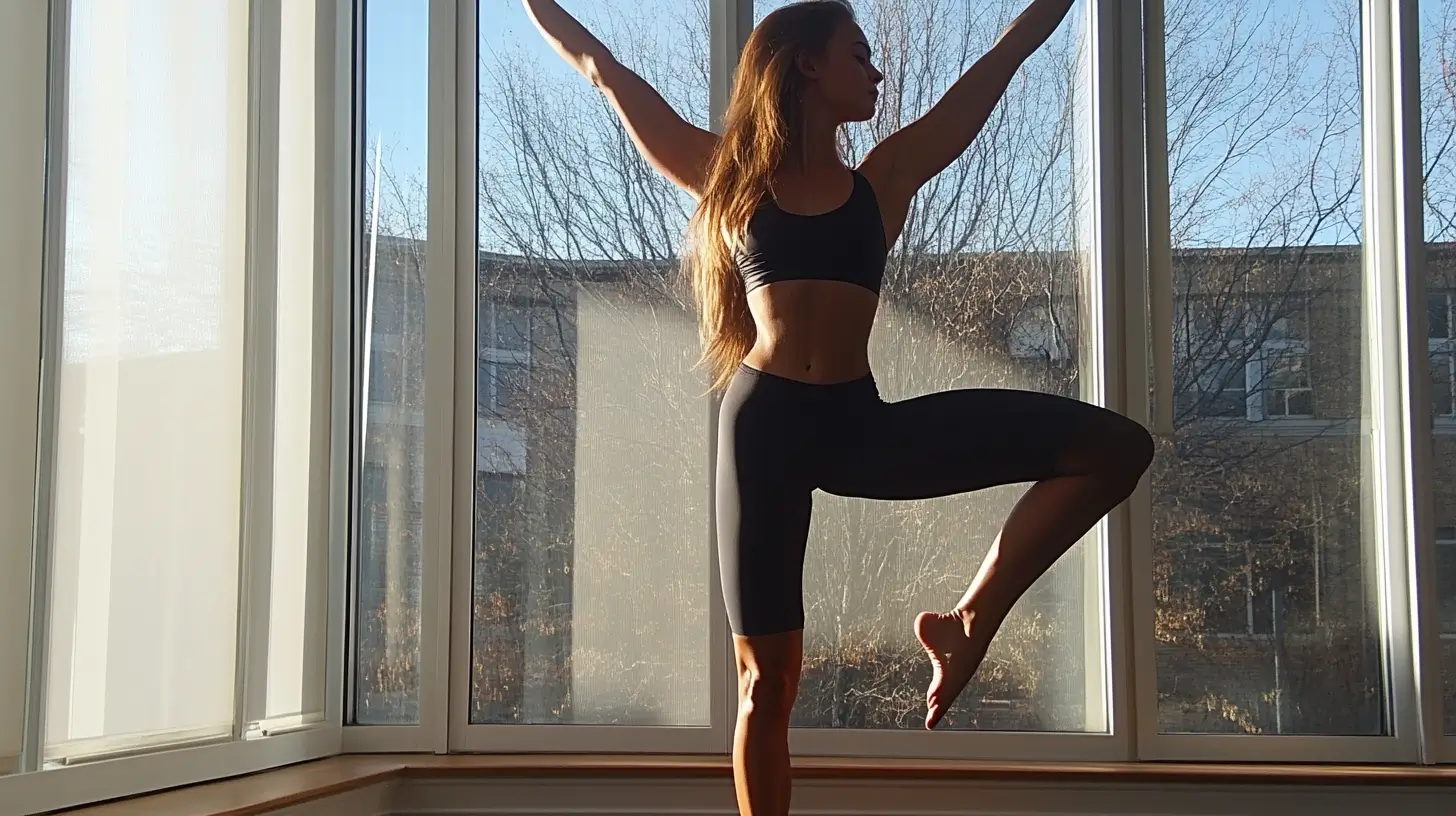
Flexibility and balance exercises are key components of a ballet dancer’s training. Our routine includes plié series, arabesque pulses, and standing obliques. These exercises enhance functional mobility, improve overall flexibility, and promote balance and stability.
These injury prevention exercises help prevent injuries and enhance your stage performance when included in your training routine.
Plié Series
Pliés are fundamental ballet exercises that involve knee bending while maintaining proper foot alignment. There are two types: demi plié (half bend) and grand plié (full bend). During pliés, keep your knees over your first and second toes, and stand with your heels on the ground only in the start, second, and first positions.
This exercise enhances flexibility and strengthens the legs, hips, and lower body. Incorporate pliés into the other side of your routine to improve your alignment and control.
Arabesque Pulses
Arabesque pulses effectively strengthen the feet, hips, and glutes, which are essential for achieving a strong and graceful posture. Hold your leg at a 45-degree angle from the ground to perform this exercise, then pulse your foot upward.
Adding arabesque pulses to your routine enhances your glute strength and overall stability, contributing to a more powerful and elegant performance.
Standing Obliques
Standing with oblique muscles: exercises target the oblique muscles, which are key for rotation and stability in various movements. Focus on controlled foot and knee movements rather than relying on momentum to lift your arms and feet to stand, and make deliberate movements to ensure effective muscle engagement.
These exercises will help you develop a toned midsection, enhancing your overall stability and core strength. Standing obliques provide a balanced approach to strength training and flexibility.
Cardio Workouts
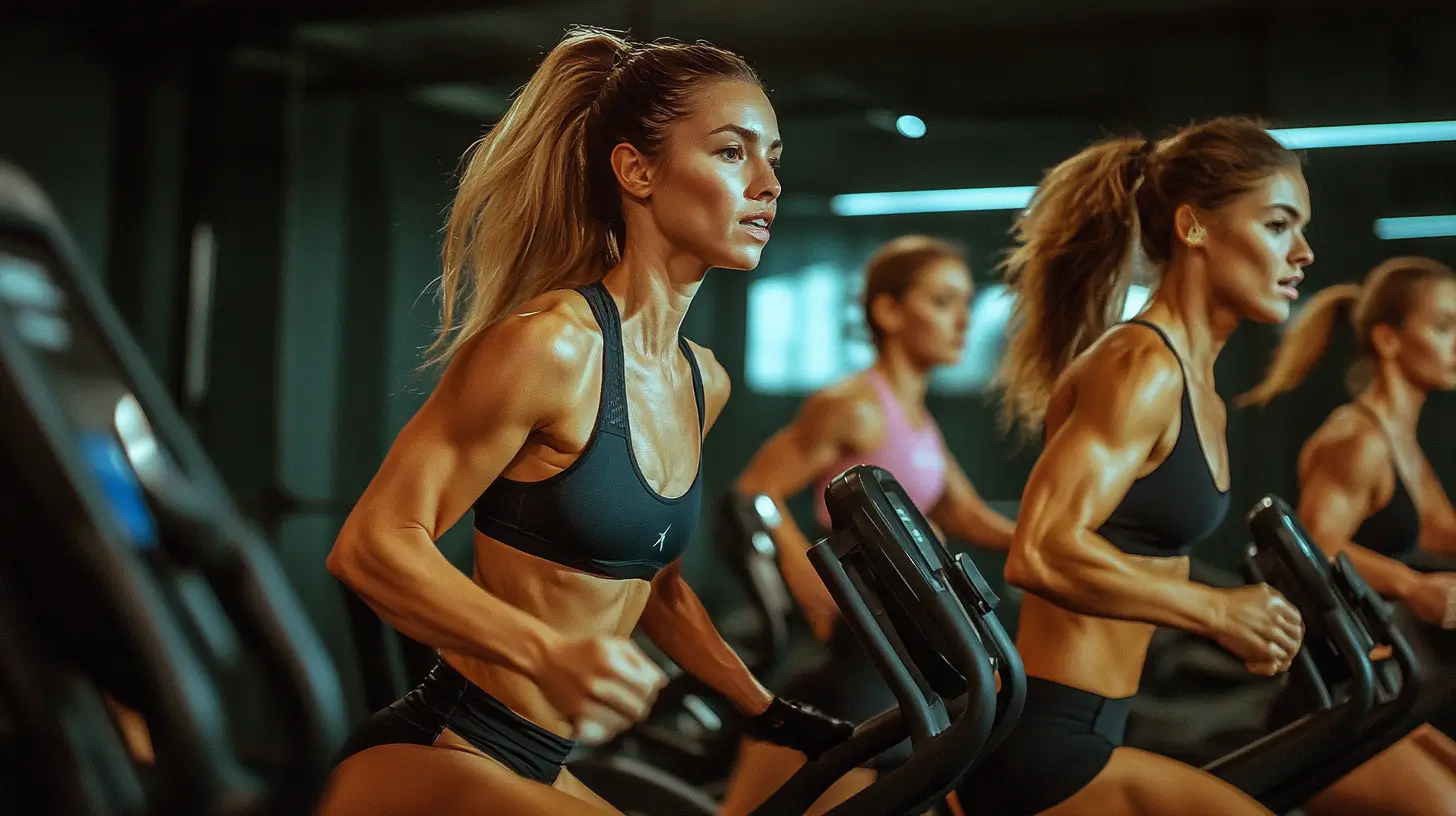
Cardio exercises are essential for maintaining cardiovascular health and endurance. Our cardio routine includes skipping intervals and box jumps, which are effective for improving cardiovascular fitness and explosive power.
These exercises enhance stamina and agility, two key elements crucial for overall ballet performance.
Skipping Intervals
Skipping intervals is an excellent way to build cardiovascular endurance and agility. Each round lasts five minutes, with 20 seconds of intense skipping followed by 10 seconds of rest. Repeat this pattern for the same entire time and duration.
Skipping enhances stamina and agility, which are crucial for ballet dancers. This high-intensity interval training elevates the heart rate and improves cardiovascular fitness.
Box Jumps
Box jumps are perfect for developing explosive power, which is essential for jumping and dynamic movements in ballet. To perform box jumps, the ballet dancer should stand facing a sturdy box, squat down, and jump onto it, landing with both feet simultaneously for stability.
Perform three sets of 10 reps to build the necessary power and stability. This exercise will help you develop the explosive strength needed for impressive ballet performances.
Cool Down and Stretching
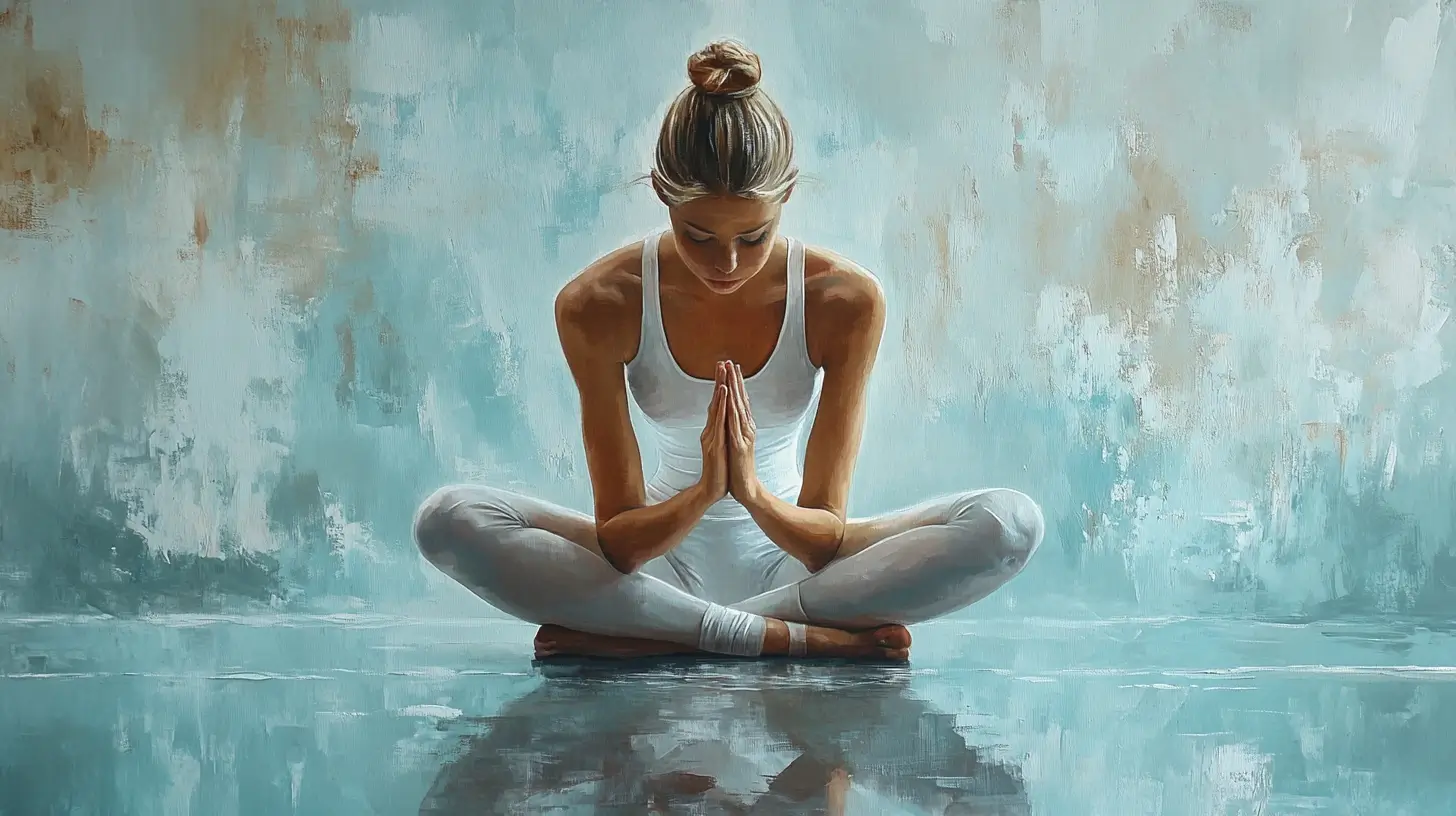
Cooling down after an intense workout is crucial for relaxing muscles and reducing post-exercise soreness. Our cool-down routine includes static stretches and deep breathing exercises. Static stretches target all major muscle groups, helping to prevent tightness and improve flexibility.
Deep breathing techniques help lower the heart rate and promote relaxation. Together, these components enhance recovery and prepare the body for future workouts.
Static Stretches
Static stretches are essential for muscle recovery after a workout.
Hold your arms and knees together, and repeat each stretch for at least 30 seconds to aid muscle recovery and improve flexibility effectively.
Focus on stretching all major muscle groups, including:
- the legs
- hips
- back
- shoulders
This practice helps prevent tightness and ensures your muscles remain flexible and ready for the next workout.
Static stretches in your cool-down routine enhance overall flexibility and recovery.
Deep Breathing
Deep breathing techniques promote relaxation and aid recovery after intense physical activity. These practices can lower your heart rate and reduce stress, enhancing recovery. Focus on slow, deep breaths, inhaling through your nose and exhaling through your mouth.
This practice will help you relax and prepare your body for future gym workouts, ensuring you remain calm and focused.
Resume
In conclusion, the ultimate ballerina gym workout is designed to help you build a strong, graceful body that moves with elegance and power. By incorporating dynamic stretches, foam rolling, lower body strengthening exercises, core stability workouts, upper body conditioning, flexibility and balance training, cardio workouts, and a thorough cool-down routine, you’ll achieve a professional ballet dancer’s strength, flexibility, and poise.
Embrace this workout routine to enhance your performance, prevent injuries, and achieve a full, ballet-inspired physique. Remember, consistency is key, and you’ll see incredible results with dedication.
FAQ
How often should I schedule a ballerina workout routine in the gym?
Most dancers benefit from two to three weekly ballet-based strength sessions, allowing at least 48 hours between intense leg work so muscles and connective tissues fully recover and adapt.
What equipment is essential for a ballet gym workout?
A sturdy barre or rail, light to moderate dumbbells, resistance bands, a Pilates ball, a foam roller, and a yoga mat cover nearly every ballet fitness exercise without requiring large machines.
Are ballet dancer workouts effective for total‑body conditioning if I have no dance experience?
Yes. Ballet fitness exercises revolve around functional movement patterns—squats, lunges, planks, and balance drills—so beginners can build strength, flexibility, and coordination even without formal dance training.
Which non‑weight‑bearing exercises help ballet dancers train around foot or ankle injuries?
Seated port‑de‑bras with light hand weights, supine core engagement drills, side‑lying leg lifts, and prone hamstring curls with resistance bands maintain strength while avoiding load through the injured limb.
How does core engagement differ from simply “holding in” the stomach?
Proper dancer core engagement wraps the transverse abdominis like a corset, lifts the pelvic floor, and lengthens the spine; it feels more like broad support around the waist than a front‑only ab squeeze.
What role does upper‑body training play in a ballerina’s workout?
Strong lats, deltoids, and postural muscles keep the shoulders down and back, stabilize port‑de‑bras, and enable overhead lifts in partner work; targeted pull‑ups, rows, and overhead presses are therefore integral.
Can ballet‑based cardio replace traditional treadmill sessions?
Yes. Jump combinations (petits allegro), traveling dégagés, and dance‑inspired interval circuits elevate heart rate while preserving lean muscle and refining coordination far more than steady‑state jogging.
How long does it take to notice a “ballerina body” transformation?
Visible changes in posture and muscle tone often appear within six to eight weeks of consistent training; significant gains in turnout strength, extension height, and endurance typically follow within three to six months.
Is weight training safe for ballet dancers?
When programmed with moderate loads, full range of motion, and dancer‑specific alignment cues, weight training enhances power, jump height, and injury resilience without sacrificing line or flexibility.
Which latest ballet exercises target ankle stability and turnout control?
TheraBand resisted demi-pointe presses, single-leg Romanian deadlifts on a balance pad, slow relevé transfers with a tennis ball between the ankles, and controlled fifth-position hops to fortify supporting structures.
What warm‑up sequence best prepares the body for a ballet gym workout?
Begin with five minutes of light cardio, then progress to dynamic stretches—such as leg swings, arm circles, and torso rotations—before finishing with targeted foam rolling of the calves, quads, and glutes to awaken proprioception.
How should I cool down after an intense ballerina workout routine?
Spend ten minutes on static stretches for hip flexors, hamstrings, adductors, and spine, followed by diaphragmatic breathing to lower heart rate and encourage parasympathetic recovery.
Can a ballet workout routine replace “leg day” in a traditional gym program?
Yes, if it includes compound lower‑body moves such as plié squats, lunges, and Romanian deadlifts alongside explosive jumps and balance drills that challenge the posterior chain and stabilizers.
What nutrition principles support a dancer’s workout routine?
Emphasize lean protein for muscle repair, complex carbohydrates for class and rehearsal energy, colorful fruits and vegetables for micronutrients, and adequate hydration to maintain joint lubrication.
How can male dancers adapt ballet gym workouts to build more upper‑body power?
Incorporate heavier pull‑ups, bench presses, and kettlebell swings while maintaining classical alignment cues—elongated spine, neutral pelvis—to ensure added mass supports rather than restricts technique.
Which ballerina core exercises give the biggest payoff for multiple pirouettes?
Pallof presses, hollow‐body holds, side plank pulses, and standing passé balances with torso rotation train deep stabilizers that keep the torso square and lifted during turns.
What common mistakes should beginners avoid in a ballet‑based workout?
Overturning the hips, collapsing arches, forcing turnout from the knees, skipping rest days, and neglecting upper‑body conditioning can all lead to plateaus or injuries.
Why is cross‑training with Pilates or yoga beneficial alongside a ballet workout?
Pilates reinforces neutral alignment and breathing control, while yoga improves fascial elasticity and mental focus; together, they complement the explosive demands of ballet gym sessions.

